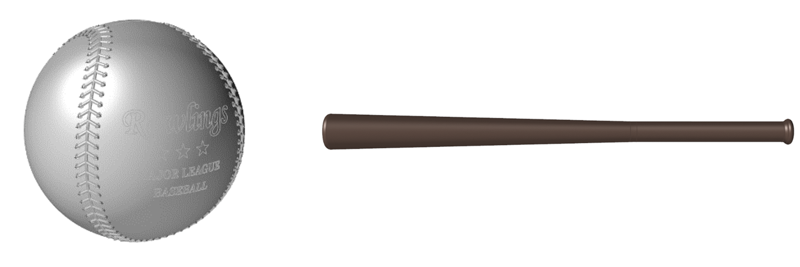Digital Debunking: Did Babe Ruth Really Hit a 587-Foot Home Run in 1919?
Summer sports and warm weather are coming to an end, but the Major League Baseball (MLB) playoffs are in full swing. April 4th, 1919 was a highly debated, yet record-breaking moment for Babe Ruth when he hit possibly the longest home run ever hit – a monster 587-foot blast – at Plant Field in Tampa, Florida during a spring training game against the New York Giants. There was a lot of debate about whether the ball really traveled that far, with a reporter going as far as to measure his strides to the point a player told him the ball landed outside the stadium. Back when the stadium was still around, the ball supposedly left the field, crossed a racetrack, and landed on the other side of a fence. For reference, the current, official MLB home run distance record belongs to Nomar Mazara, who launched a 505-footer against the Chicago White Sox in 2019.
The reason for the speculation at the time, despite the fact that Ruth was one of the biggest, strongest players in the MLB then, was that “power” baseball was still in its infancy.
Lightning-fast pitches and thundering hits that sent balls sailing into light towers (if you had them!) were exceedingly rare at that time. In fact, the period in baseball before the 1920’s is commonly known as the “dead-ball era.” This was a time in baseball characterized by low scoring, few home runs, and an emphasis on bunting and speed as ways to score runs. Most importantly, this era is also known for its lax equipment rules that led to game balls that were soft, scuffed, and tampered with by pitchers and fielders. This meant that the baseballs didn’t travel nearly as far as the ones the MLB uses today.
Combine the dead-ball era with the rudimentary state of 1920’s athletic training and the era’s slow pitching – not to mention Ruth’s supposed junk food-laden diet – and you get a feat that many have questioned, even for one of the sport’s greatest sluggers. Even though Ruth used bats that were more than 6-22 ounces heavier than his modern MLB counterparts, a 587-foot home run using the baseballs of 1919 would have been a titanic feat.
Our team wanted to find the truth. By replicating the same conditions that were present on that day and simulating it, we set out to find out if Ruth could really make this swing happen in 1919. Luckily, baseball fans at Altair had the right tools at their disposal to get to the bottom of this. We wanted to find out: What kind of force would Ruth need to generate to make the ball travel 587 feet?
Our team completed modeling and simulations in Altair MotionSolve to demonstrate the “crash” on impact of the ball hitting the bat, the approach to hitting the ball, necessary speeds, and all additional factors that day, including weather and equipment dimensions.
Prepping the Equipment
Based on details we gathered about the game and Ruth’s equipment, our team set the initial model conditions as follows:
- Initial ball (pitch) velocity: 98 mph (For a pitcher in 1919, this is highly unlikely. But we’ll give him the benefit of the doubt.)
- Initial rotational velocity of ball: 1800 rpm
- Pitch angle: 3 degrees
Body characteristics were also set as follows:
- Mass of bat: 1.4 kg
- Mass of ball: 0.15 kg

CAD models used for the baseball and bat.
Our team also applied aerodynamic forces such as lift force, drag force, and wind force to the ball to account for wind and how the ball likely traveled through the air. From what we gathered, reports say the wind that day was traveling at 17 mph – acting as a tailwind for the ball – so we used that for calculations.
Hitting the "Sweet Spot"
In baseball, the meat of the bat’s barrel – the area where hitters can maximize their power – is called the “sweet spot.” In classic dynamics, this spot is called the center of percussion (cp) and has the effect of not generating a reaction force on the player’s hand when the ball is struck at that location. Rather, the energy is transferred from the bat to the ball, rather than from the bat to the player’s hands, so they will feel little to no vibration on impact, leading to a more powerful hit. The team now calculated the center of percussion for this simulation.
For launch angle, we defined the angle the bat was traveling at relative to the horizontal plane before hitting the ball. Data shows that a 25–35-degree launch angle is ideal for home runs; for our simulation, we applied a 30-degree launch angle.

Ideal home-run producing launch angles.
Simulating Babe Ruth's Home Run Record
After modeling the simulation’s basic components and the trajectory of the bat needed to hit the ball, our team came up with the following visualizations of the home run using Altair Inspire Studio and Altair HyperView. Inspire Studio is a fast and innovative solution for designers, architects, and digital artists to visualize designs, great for both expert and novice users.
Inspire Studio rendering of the home run.
Inspire Studio rendering of the home run (close-up).
Aerodynamic forces on the ball can be seen in this simulation clip in HyperView below:
Aerodynamic force lift and drag on the baseball as seen in HyperView.
Here, you can see a close-up of the home run simulation in HyperView. In HyperView, post-processing and model visualization for multiple simulation types is possible, with broad solver support and faster results availability.
Result Comparisons
To understand which specific factors played into a successful home run, we ran some graphs to depict the different conditions that could have been present.
1. Comparison With and Without Wind
.png?Status=Master&sfvrsn=d785f5f3_1)
Bat and ball trajectories on the X-Z plane.
We can see from the results that even if the wind hadn’t been assisting the home run, we could have seen a traveled distance more within the range of 390-400 ft. Not a massive distance in the modern game, but still an impressive hit that would still be a home run in most modern MLB stadiums.

Aerodynamic forces acting on the ball.

Graph depicting reaction forces acting on a batter's hands.
Looking at the figure above, we noticed that due to the ball hitting the bat on the “sweet spot,” the forces on Ruth’s hands would have been small.
2. Ball Not Hitting the Center of Percussion
Now, we wanted to see how the forces exerted on Ruth’s hand would change if we hit the ball somewhere other than the “sweet spot.” We used the case that includes wind force.

The forces that act on a batter's hands is exponentially larger when they don't hit the "sweet spot."
When hitting the ball on a spot other than the center of percussion, much greater forces were exerted on Ruth’s hand – forces approximately 10x larger.
3. Launch Angle Comparison
Lastly, we examined how different launch angles would have affected the home run’s distance. Again, we observed the case including wind force, and only changed the launch angle parameter of our model. Three cases of launch angles were used: 15 degrees, 30 degrees, and 40 degrees.
A launch angle of 30 degrees was ideal to execute Ruth’s home run. A larger angle could have been used to achieve similar results, but no less.
Conclusion
Based on our findings, a combination of factors in addition to force would have contributed to making this home run possible, including launch angle, bat speed, aerodynamic forces, and wind. The outcome could have been much different if the angle of the bat that hit the ball was adjusted, even with the same amount of force. The same goes for wind and weather conditions.
But to answer our original question, the mighty Babe Ruth would have had to hit the ball with a velocity of 145 mph to hit a home run exceeding 575 feet. Considering the fastest batted ball ever measured in MLB history (using the latest, highly accurate measuring technology) was Oneil Cruz’s 122.4 mph line-drive home run in August 2022, it’s nearly impossible Ruth could have hit his home run as far is it was reported at the time. This is especially the case when you consider that Babe Ruth was 6’2”, 215 pounds, while Oneil Cruz stands a towering 6’7”, 220 pounds and hits baseballs that are harder and springier than those used nearly a century ago.
We feel comfortable saying this myth is debunked. But regardless, Ruth is one of the MLB’s legends for a reason – he’s only one of just four players to hit more than 700 home runs in a career, and when he retired, he held more than 50 individual records. Let’s just say there’s still a reason they call him “The Sultan of Swat,” “The Great Bambino," or more simply, “The Babe.”





